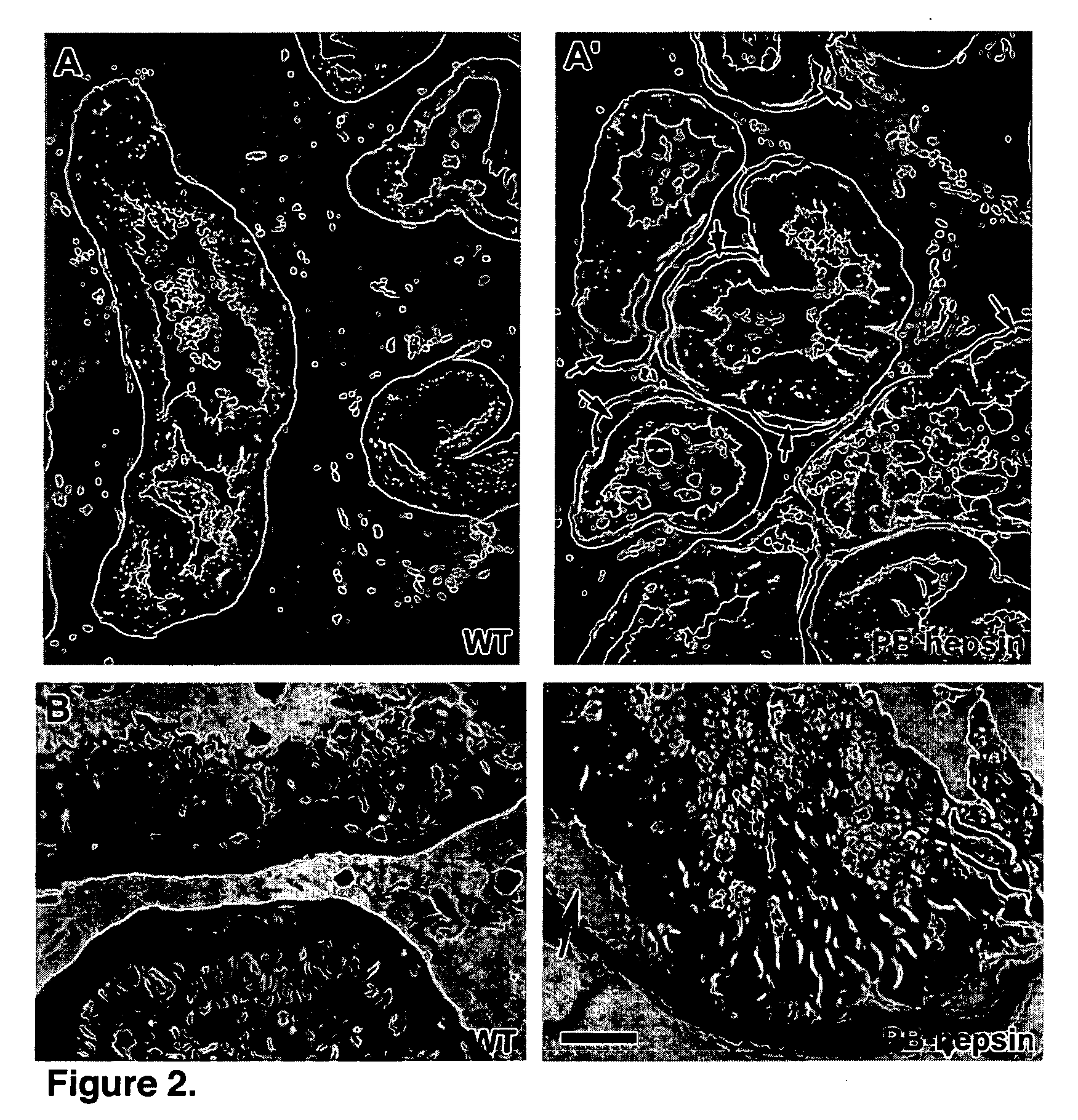Animal models of cancer development and metastasis
a cancer and animal model technology, applied in the field of animal models of cancer development and metastasis, can solve the problems of low rate of metastasis formation of existing mouse models, complex process of metastases at distant organs, and inability to replicate using cells growing outside the body, etc., to achieve the effect of reducing the number of metastases to the liver, lung and/or bon
- Summary
- Abstract
- Description
- Claims
- Application Information
AI Technical Summary
Benefits of technology
Problems solved by technology
Method used
Image
Examples
examples
[0085] To determine the role of hepsin in prostate epithelium in vivo, transgenic mice having a probasin promoter driven hepsin gene (PB-hepsin) were generated and analyzed. Hepsin overexpression caused weakening of epithelial-stromal adhesion. Immunofluorescent staining and electron microscopy revealed the disorganization and disruption of the basement membrane in hepsin-expressing prostate glands. To determine the potential role of hepsin in prostate cancer progression, PB-hepsin transgenic animals were crossed with mice expressing the SV40 large T antigen in the prostate epithelium (LPB-Tag mice, line 12T-7f) (Kasper et al., Lab. Invest. 78:319-333 (1998)). LPB-Tag animals develop PIN lesions and foci of prostate carcinoma; however, primary tumors do not metastasize. By 21 weeks of age, up to 65% of the double transgenic LPB-Tag / PB-hepsin mice, but none of the single transgenic LPB-Tag or PB-hepsin animals, developed prostate cancer which metastasizes to liver, lung and bone. The...
PUM
| Property | Measurement | Unit |
|---|---|---|
| frequency | aaaaa | aaaaa |
| Northern blot hybridization | aaaaa | aaaaa |
| areas | aaaaa | aaaaa |
Abstract
Description
Claims
Application Information
 Login to View More
Login to View More - R&D
- Intellectual Property
- Life Sciences
- Materials
- Tech Scout
- Unparalleled Data Quality
- Higher Quality Content
- 60% Fewer Hallucinations
Browse by: Latest US Patents, China's latest patents, Technical Efficacy Thesaurus, Application Domain, Technology Topic, Popular Technical Reports.
© 2025 PatSnap. All rights reserved.Legal|Privacy policy|Modern Slavery Act Transparency Statement|Sitemap|About US| Contact US: help@patsnap.com



